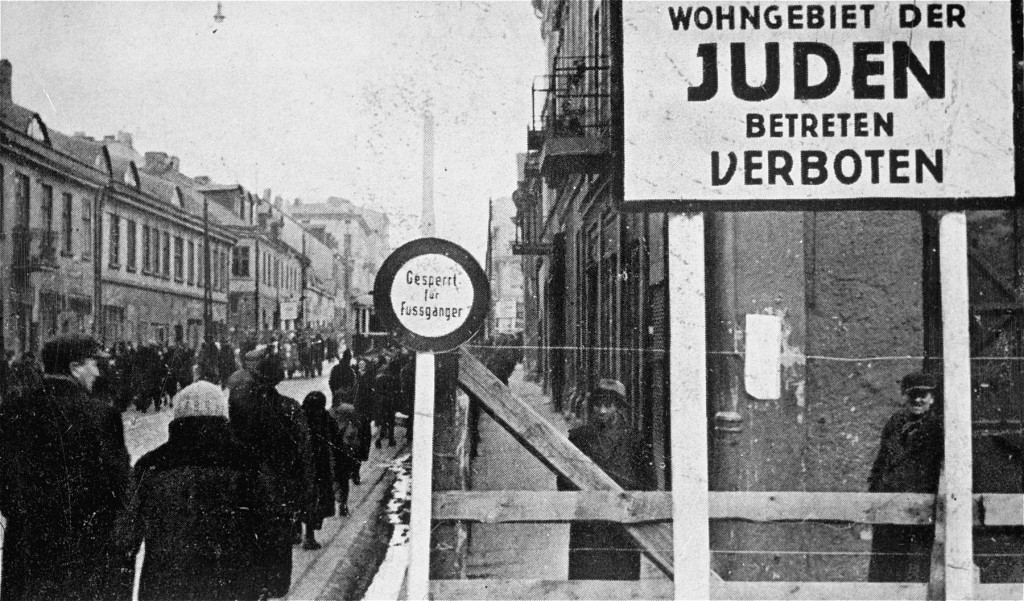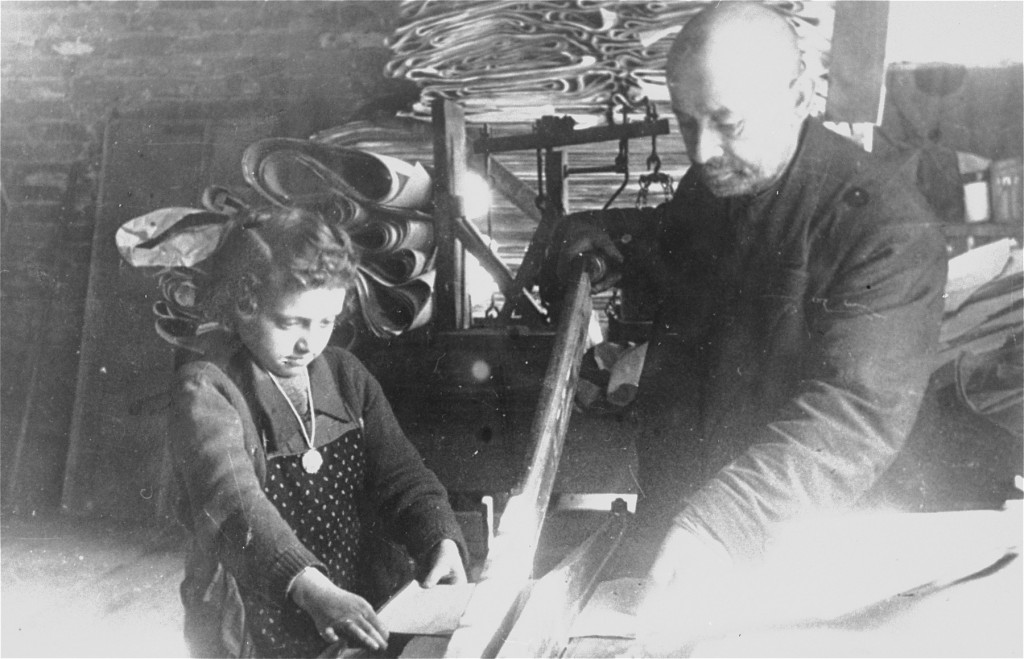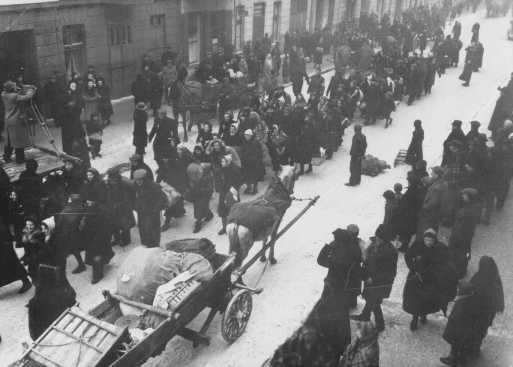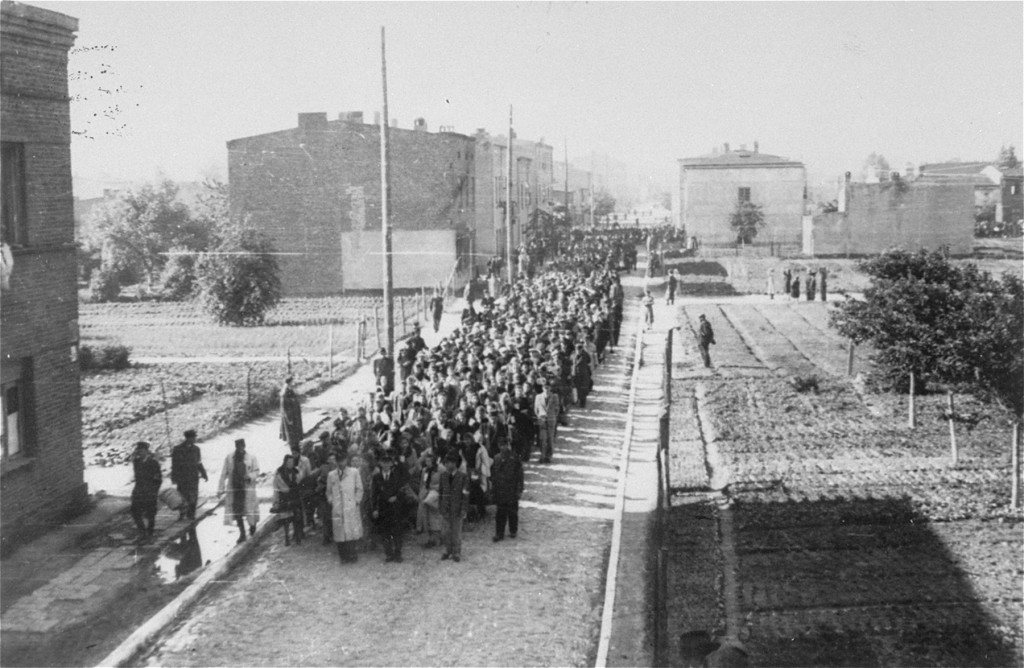
Łódź
The city of Łódź (Lodz) is located about 85 miles southwest of Warsaw, Poland. The Jews of Łódź formed the second largest Jewish community in prewar Poland, after Warsaw.
German troops occupied Łódź on September 8, 1939. This was one week after Germany invaded Poland on September 1. Łódź was annexed to Germany as part of the Warthegau. The Germans renamed the city Litzmannstadt, after a German World War I general, Karl Litzmann.
The Łódź Ghetto
In early February 1940, the Germans established a ghetto in the northeastern section of Łódź. About 160,000 Łódź Jews were forced into a small area.
The Germans isolated the ghetto from the rest of Łódź with barbed-wire fencing. German Order Policemen guarded the ghetto perimeter. Internal order in the ghetto was largely the responsibility of Jewish ghetto police. The ghetto area was divided into three parts by the intersection of two major roads. The intersection itself lay outside the ghetto. Bridges constructed over the two thoroughfares connected the three segments of the ghetto. Streetcars for the non-Jewish population of Łódź traversed the ghetto but were not permitted to stop within it.

Łódź was the center of the textile industry in prewar Poland. The Łódź ghetto thus became a major production center under the German occupation. As early as May 1940, the Germans established factories in the ghetto and used Jewish residents for forced labor. By July 1942, there were 74 workshops within the ghetto. The major factories produced textiles, especially uniforms, for the German military. Mordechai Chaim Rumkowski, chairman of the Jewish council in the Łódź ghetto, hoped to prevent the destruction of the ghetto by making it as productive as possible. He gambled that making Jewish labor essential to German factories would spare Jews from eventual deportation and preserve the Łódź ghetto until the end of the war.
Conditions in the Ghetto
Living conditions in the ghetto were horrendous. Most of the quarter had neither running water nor a sewer system. Hard labor, overcrowding, and starvation were the dominant features of life. The overwhelming majority of ghetto residents worked in German factories and received only meager food rations. More than 20 percent of the ghetto's population died as a direct result of the harsh living conditions.
The whole ghetto was designed, actually, to starve the people out.
—Leo Schneiderman
Deportations to the Łódź Ghetto
In 1941 and 1942, almost 40,000 Jews were deported to the Łódź ghetto: 20,000 from Germany, Austria, the Protectorate of Bohemia and Moravia, and Luxembourg, and almost 20,000 from the smaller provincial towns in the Warthegau. About 5,000 Roma (Gypsies) from Austria, primarily from the Burgenland province, were deported to the ghetto. They were confined in a segregated block of buildings.
In total, approximately 210,000 people were forced to live in the Łódź ghetto.

Deportations from the Łódź Ghetto
In January 1942, German authorities began to deport Jews from Łódź to the Chełmno killing center. By the end of September 1942, they had deported approximately 70,000 Jews and about 4,300 Roma to Chełmno.
At Chełmno, a special SS detachment killed the Jewish deportees in gas vans. These were large vans whose back storage area had been converted into an airtight gas chamber to murder people with poisonous carbon monoxide gas. Jews were concentrated at assembly points in the ghetto before deportation. The Germans at first required the Jewish council to prepare lists of deportees. As this method failed to fill required quotas, the Germans resorted to police roundups. German personnel shot and killed hundreds of Jews, including children, the elderly, and the sick, during the deportation operations.

Between September 1942 and May 1944, there were no major deportations from Łódź. During this period, the ghetto resembled a forced-labor camp.
In the spring of 1944, the Nazis decided to destroy the Łódź ghetto. By then, Łódź was the last remaining ghetto in German-occupied Poland, with a population of approximately 75,000 Jews in May 1944. In June and July 1944 the Germans resumed deportations from Łódź, and about 7,000 Jews were sent to Chełmno. The ghetto residents were told that they were being transferred to work camps in Germany. The Germans deported almost all of the surviving ghetto residents to the Auschwitz-Birkenau killing center in August 1944. A small group of 1,000–1,500 Jews remained behind in the Łódź ghetto. They were responsible for sorting the possessions of the deported and cleaning up.

Critical Thinking Questions
Why did the Nazis resort to a system of ghettos?
Besides armed resistance, in what other ways did the Jews resist the Nazis while forced to live in the ghettos?
How does the history of the Łódź ghetto and its inhabitants illustrate the systematic nature of the “Final Solution?”
Examine the realities and choices faced by Jewish council members in the ghettos.
Learn about the lives of the Jews in the community of Łódź before 1939.

